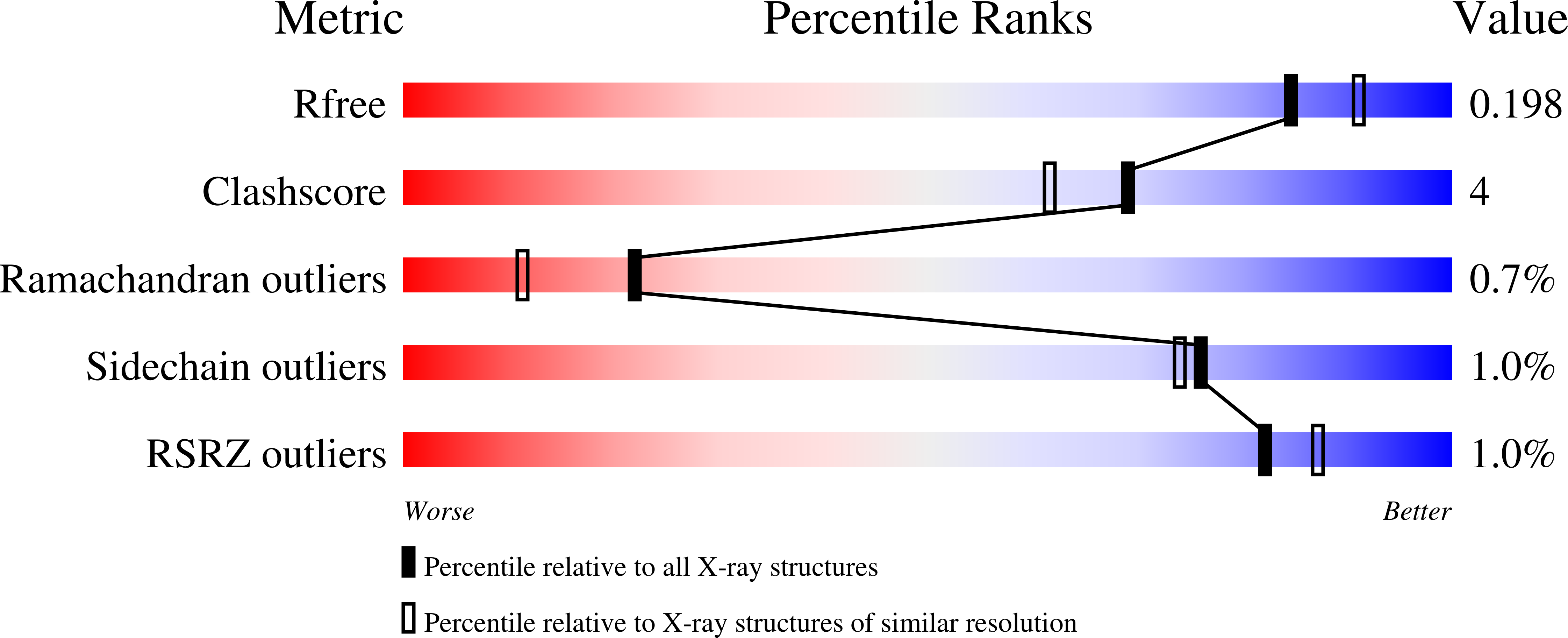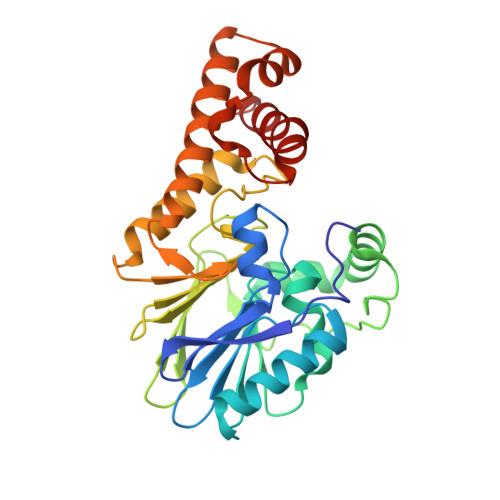Structural basis for the hydrolytic dehalogenation of the fungicide chlorothalonil.
Catlin, D.S., Yang, X., Bennett, B., Holz, R.C., Liu, D.(2020) J Biol Chem 295: 8668-8677
- PubMed: 32358058
- DOI: https://doi.org/10.1074/jbc.RA120.013150
- Primary Citation of Related Structures:
6UXU - PubMed Abstract:
Cleavage of aromatic carbon-chlorine bonds is critical for the degradation of toxic industrial compounds. Here, we solved the X-ray crystal structure of chlorothalonil dehalogenase (Chd) from Pseudomonas sp. CTN-3, with 15 of its N-terminal residues truncated (Chd T ), using single-wavelength anomalous dispersion refined to 1.96 Å resolution. Chd has low sequence identity (<15%) compared with all other proteins whose structures are currently available, and to the best of our knowledge, we present the first structure of a Zn(II)-dependent aromatic dehalogenase that does not require a coenzyme. Chd T forms a "head-to-tail" homodimer, formed between two α-helices from each monomer, with three Zn(II)-binding sites, two of which occupy the active sites, whereas the third anchors a structural site at the homodimer interface. The catalytic Zn(II) ions are solvent-accessible via a large hydrophobic (8.5 × 17.8 Å) opening to bulk solvent and two hydrophilic branched channels. Each active-site Zn(II) ion resides in a distorted trigonal bipyramid geometry with His 117 , His 257 , Asp 116 , Asn 216 , and a water/hydroxide as ligands. A conserved His residue, His 114 , is hydrogen-bonded to the Zn(II)-bound water/hydroxide and likely functions as the general acid-base. We examined substrate binding by docking chlorothalonil (2,4,5,6-tetrachloroisophtalonitrile, TPN) into the hydrophobic channel and observed that the most energetically favorable pose includes a TPN orientation that coordinates to the active-site Zn(II) ions via a CN and that maximizes a π-π interaction with Trp 227 On the basis of these results, along with previously reported kinetics data, we propose a refined catalytic mechanism for Chd-mediated TPN dehalogenation.
Organizational Affiliation:
Department of Chemistry and Biochemistry, Loyola University Chicago, Chicago, Illinois, USA.















